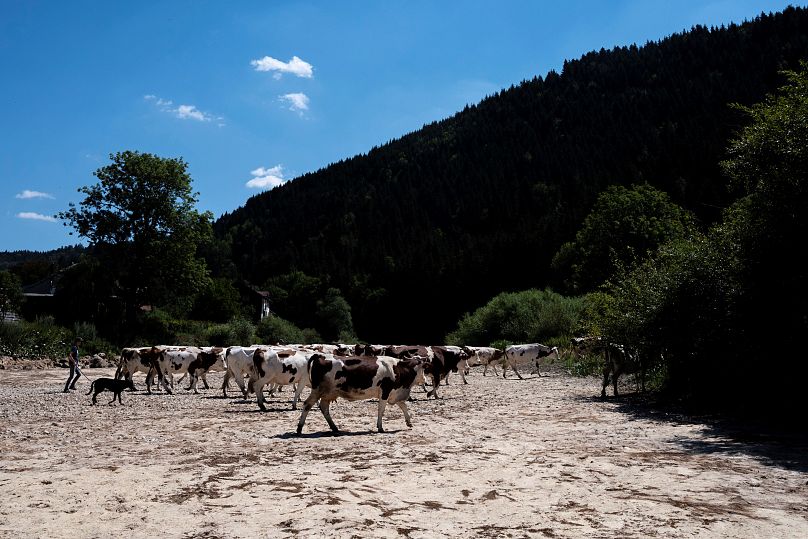According to Météo France, from July 1 to July 28, average precipitation represented only 28% of normal values across the country, making last month the driest July since 1959.
France experienced its driest July in more than 60 years, prompting the authorities to limit the use of water in more than two-thirds of the territory.
According to Météo France, from July 1 to July 28, average precipitation represented only 28 per cent of normal values across the country, making last month the driest July since 1959.
The southwest, Loire Valley and northeast were particularly affected by this significantly prolonged deficit of rains, known as a meteorological drought.
Prefectural decrees limiting the use of water have been issued in 73 of the country's 101 départements with 20 already experiencing crisis situations.
Hard-hit vegetation
As a consequence of this lack of rain, the country's soil is drier than usual, which is impairing the proper development of vegetation.
This agricultural drought "must be watched" in the northeastern region Grand Est, as well as in Auvergne-Rhône-Alpes, in Hauts-de-France and Lower Normandy, notes the country's meteorological agency.
This situation (drought, high temperature) also favours the development of wildfires.
Dry riverbeds
The largest French river, the Loire, is currently experiencing a sharp drop in its flow. The prefecture of the department of Maine-et-Loire, for example, has put in place many restrictions due to the situation.
Waterways have even completely disappeared in the northeast of the country, like the Doubs which is completely dry with the riverbed transformed into grazing ground for cattle.
This phenomenon had already been observed two years ago when this river had been completely dry for more than six months.
A situation that could get worse?
France is set to face a new heatwave at the end of the week. Météo France indicated that although it will be less intense than the previous one, it should be "longer and more severe". Peaks of 38°C or 40°C are expected in the country.
For farmers, these repeated heatwaves are becoming more and more problematic. Last Friday, the French Ministry of Agriculture allowed the use of fallows for pastoralists in 47 départements affected by the drought.
This authorisation will make it possible to use the areas set aside (i.e. uncultivated land to limit overproduction) in order to produce fodder or turn them into pasture ground for livestock.












